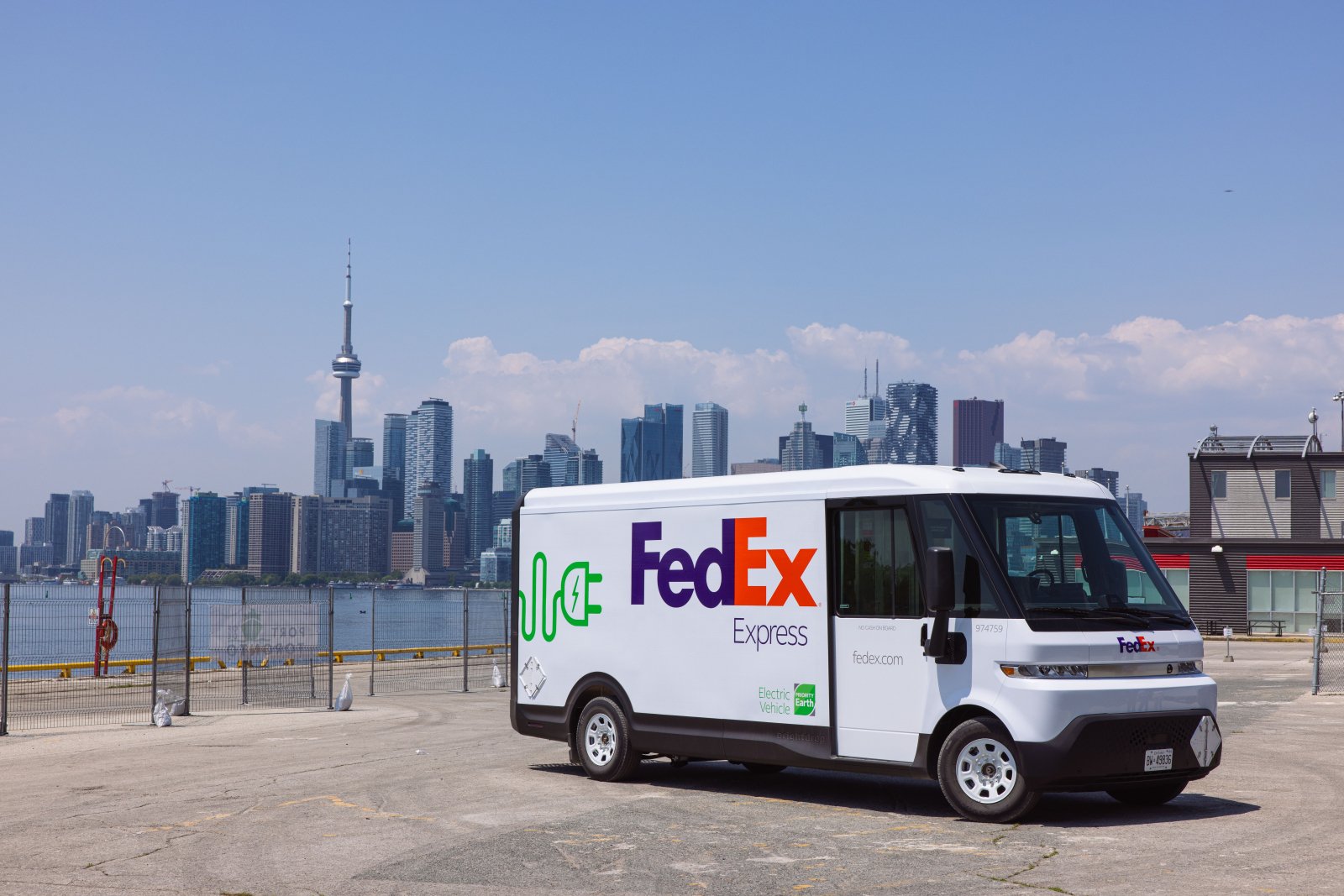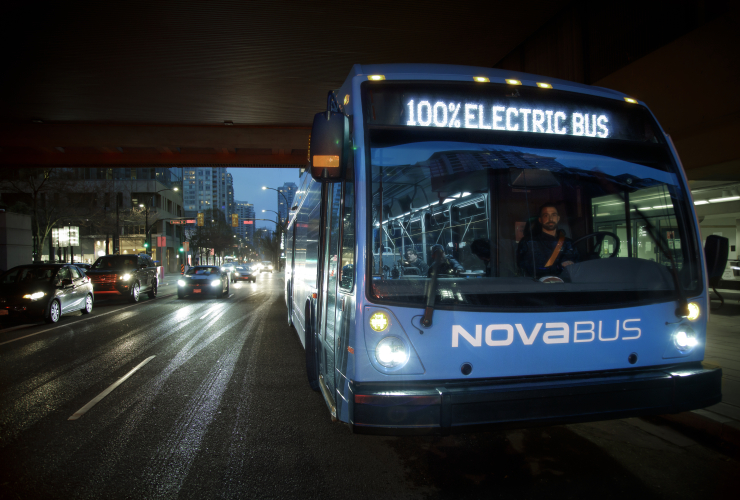FedEx Express Canada is going electric. The delivery company has added 50 all-electric BrightDrop Zevo 600 vehicles to its fleet, including 40 in Toronto, five in Montreal and five in Vancouver.
The move is part of the company's efforts to reduce carbon emissions and adopt sustainable transportation solutions. Its goal is to transform its entire parcel pickup and delivery fleet to all-electric, zero-emission vehicles by 2040. BrightDrop, a wholly owned subsidiary of General Motors (GM), is manufacturing the Zevo 600s at GM’s CAMI Assembly plant in Ontario.
FedEx is aiming to shift all of its vehicle purchases to electric by 2030 with an intermediary goal of 50 per cent of purchases by 2025.
“FedEx Express Canada is proud of the role we’re playing to help our company work toward the goal of carbon-neutral operations globally by 2040,” said Dean Jamieson, vice-president of operations at FedEx Express Canada. “Working with companies like BrightDrop that are helping to build these solutions, right here in our own backyard, shows how Canada is helping to bring more sustainable solutions to life across a variety of industries.”
Jamieson told Canada’s National Observer that last-mile delivery vehicles — those that bring packages to customers’ doorsteps — are ideal candidates for electrification due to advancements in battery technology and the specific requirements of FedEx's network.
The Zevo 600 is powered by GM’s Ultium Platform, a battery and motor system with an estimated range of up to 400 kilometres on a full charge, said Jamieson. An average FedEx Express Canada pickup and delivery courier does not come close to driving that far on a regular business day, he added.
To avoid charging difficulties, FedEx is building charging infrastructure across its Canadian facilities. The company has already installed 80 charging stations in Montreal, Toronto and Surrey, B.C., where the Zevo 600 vehicles have been introduced, Jamieson said. FedEx Express plans to primarily charge its pickup and delivery vehicles at its own facilities.
“FedEx Express intends to maintain a 1:1 vehicle to charger ratio, with additional plans for contingency chargers. Therefore, the total number of chargers will directly depend on the total number of electric pickup and delivery vehicles,” he added.

In Canada, transportation accounts for 25 per cent of the country’s greenhouse gas emissions, which cause global heating. The federal government has mandated all new passenger vehicles must be electric by 2035 to achieve its climate targets.
Experts say it is encouraging to see companies like FedEx adopt cleaner technologies and reduce carbon emissions. But widespread adoption of electric vehicles in the postal and delivery services sector will still require advancements in battery technology, development of efficient charging infrastructure, integration with renewable energy sources and collaborative innovation among stakeholders.
“This move highlights the growing importance of electric vehicle technology in the transportation industry,” said Sheldon Williamson, a professor at Ontario Tech University in the engineering and applied science faculty. “It is a crucial area where emissions can be significantly reduced by adopting cleaner technologies.”
Williamson said electric vehicles are often quieter and produce less noise pollution, which positively affects the quality of life in urban areas. Furthermore, operational costs of electric vehicles, which don’t require fuel and typically have lower maintenance costs, can be lower in the long run, he added.
The remaining sticking points are efficient charging infrastructure, optimizing battery systems and integrating smart grid technologies, said Williamson. “By working together, innovative solutions can be developed to address challenges related to infrastructure, technology and standards, ultimately accelerating the widespread adoption of electric vehicles,” he added.
In 2022, alongside a larger $2-billion investment by GM, the federal and Ontario governments committed to substantial investments of up to $259 million each in the GM plant located in Oshawa and its CAMI facility in Ingersoll, according to the CBC. These investments are specifically earmarked for the production of electric vehicles. Additionally, the funds were to aid the construction of electric commercial vans under the newly introduced BrightDrop brand, to start production at the CAMI plant in Ingersoll.
To help meet strong customer demand, BrightDrop says CAMI expects to produce 50,000 Zevo vans annually by 2025.
This story was produced in partnership with Journalists for Human Rights for the Afghan Journalists-in-Residence program funded by the Meta Journalism Project.
Very good news from Fed Ex!
Very good news from Fed Ex! Kudos to them.
My only question to them and to all municipalities and corporations who have slow wind plans up to electrification is - why a goal of only 50% new electric vehicle purchases by 2025 and the 100% by 2030?
Why not 100% immediately?
Get on with it.
I'd be curious to know what
I'd be curious to know what optimization of battery systems is required. Can't the vehicle charge level be bumped up during the lunch break? Delivery vehicles do most of their traveling on slow stop & go urban streets which are perfect for an EV. Batteries already exist for class 8 (aka semi) trucks. Why not a delivery truck?






Comments